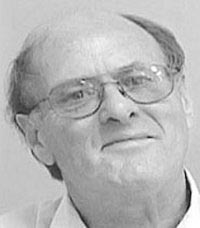I’ve been making the same trip to the supermarket the whole thirty-seven years we’ve lived in Cayman. Well, pretty much. Until 1997 we lived just over the road from a mini-market, which meant there wasn’t much need to patronize the bigger shops. That mini-market was wiped out in the hurricane of 2004, and has never been re-built.Anyway, it’s an easy and pleasant drive out to our nearest shopping-place, out by the Airport, and I’ve never gotten tired of it. Here: pretend you’re in the car with me, and I’ll give you a running commentary.
The first mile is suburban, up as far as the government Hospital. There’s a dodgy Four-Way-Stop junction by the Hospital; I mentioned it in a blog-post in May last year called “Small Island Traffic”. I try to go mid-morning, when there aren’t many cars around.
The scenery is varied in the second mile. On either side of the road there are doctors’ offices, one-storey apartments, private houses, little shopping plazas, and the United Church’s Prep School; then to the traffic lights beside the cricket field; then on to the end of the airport runway and around up the other side of it.
There’s talk of extending the runway back this way, but that would force incoming planes to fly even lower above the Hospital’s roof. That sounds a bit hairy, and the surgeons wouldn’t look kindly on having their windows rattle in the middle of delicate operations. A lower flight-path would bring the planes closer to our roof, too. Already we have to suspend conversation during the thrice-daily “bombing runs”. It would make more sense to lengthen the runway at the other end, further into the lagoon.
But that may never happen. Our government’s finances have been mismanaged for decades, and our colonial masters in London have had to intervene the way the EU rulers did in Greece the other day. We too have a bloated and pampered Civil Service, whose petty corruption is the talk of the town. One day, we will need a whole new airport to be built in the unpopulated eastern end of the Island; and years of frugality will be required before there’ll be enough Public Revenue to do that.
Foster’s supermarket is on the left, opposite the runway. My shopping job is usually done in fifteen minutes, but socializing is good for anything up to an hour more. In the old days, people did their chatting wherever they met up; but the trebling of the population since we arrived in ’78 – and our retirement from work – makes supermarkets about the only place we meet old acquaintances, now.
This supermarket is a true melting-pot of shapes, sizes, colours, occupations, and languages. The languages are mostly English and Spanish, in a variety of dialects and accents; but also quite a bit of Filipino (Tagalog) chat goes on between shoppers and staff. At least I assume it’s Tagalog: maybe not. Only half the population of the Philippines speaks Tagalog, and I’ve no idea what parts our migrants come from. Everyone’s cheerful, that’s the main thing.
Shopping done, let’s go home. I always drive home a different way from the way I went, taking Elgin Avenue down past the Stalinesque Government Admin Building and the Central Police Station, then doing a left into a short one-way road that joins Harbour Drive at a pedestrian crossing. How quickly one negotiates the crossing is governed by how many cruise-ships are at anchor on the day – and on whether some tourist in a rental car meets us halfway up the one-way road. (We locals are always kind to them, and wait patiently while they back and fill, or nip into the Royal Bank’s parking lot for a surreptitious turnaround.)
At the moment our community is in the middle of a huge argument whether to borrow $200 million to build a cruise-ship berthing jetty, to save some of the passengers from braving the shuttle ferries to and from their ships. We’re told that such a jetty would justify the expenditure only if it included seven acres of new shops. But such a development would kill George Town dead as mutton. What to do?
The coast road southward towards home runs beside tourist shops, dive sites and “offshore” corporate offices, before passing through another charming suburban area. There’s a small hotel and outdoor bar/restaurant on the sea-side opposite the entrance to our sleepy cul-de-sac. We usually walk visitors over there to use the pool and eat a simple meal. It makes a change from cooking at home and dining on our verandah under the umbrellas.
Our street used to be called simply Phelands, and it’s still called that by long-term residents. Unfortunately, the official – and officious – street-naming committee got it into their silly heads that it should be re-named Phelan. Huh. Not simply Phelan, but (on the excuse that it is a dead end), Phelan Close. Say that out loud and you’ll see why we resent it. Sigh. Comedians…
Gordon Barlow has lived in Cayman since 1978. He was the first full-time Manager of the Cayman Islands Chamber of Commerce (1986-1988) – a turbulent period when the Chamber struggled to establish its political independence. He has publicly commented on social and political issues since 1990, and has represented the Chamber at several overseas conferences, and the Cayman Islands Human Rights Committee at an international symposium in Gibraltar in 2004. His blog www.barlowscayman.blogspot.com contains much information on life in Cayman, written from the point of view of a resident and citizen.
Read Gordon's other Expat Focus articles here.

